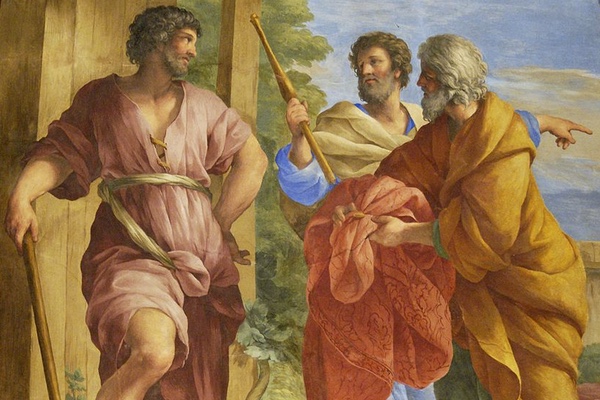Is Trump the 21st Century Cincinnatus?

Cincinnatus chosen as dictator. By Giovanni Francesco Romanelli (1612–1660) - Jastrow, CC BY 2.5
In dire times the ancient Romans would appoint a dictator, giving him unchecked power to lead the Roman Republic out of the crisis. In electing Donald Trump, a threatened, indignant white and older America, still with its strength in numbers, elected their hoped-for savior. Exit polling data collected by Edison Research for the National Election Pool indicate that 63% of white male voters and 53% of white female voters chose Trump. Also, the majority of voters older than 40 voted for him.
Before Rome was an empire, it was a republic—literally a “thing of the people”—with primary power in the hands of the Senate, composed of 300 senators, while two consuls served as chief executives. In extraordinary times, the Senate would appoint a dictator, a single man with supreme power, normally appointed for six months and normally leading an army into action against a specified enemy. He could rule by decree, change any law, and act as the supreme judge, with no appeals allowed after his judgments. After leaving office, he could not be legally charged with any wrongdoings during his tenure.
The most legendary dictator was Cincinnatus who was appointed dictator in 457 BCE to defend Rome against the invading Aequi. The Roman historian Livy tells us that Cincinnatus, leaving his three-acre farm, accepted the position, raised an army, and defeated the Aequi.
Clearly the analogy has its limits. America faces no literal military invasion; however, white and older America, fears fanned by Trump’s dark vision of reality, senses an invasion of immigrants from Latin America and terrorists from Muslim countries. While he is no dictator, his supporters would be happy to see President Trump use his executive powers to the fullest to “drain the swamp” and fix these problems. Also, damn to the environment and down with regulation, they would praise him for giving full throttle to unchecked economic development in a quest to bring back jobs supposedly given away to foreigners but in reality eliminated more by technological progress.
The biggest difference is that Cincinnatus epitomized Roman virtue and unselfish civic action; Trump epitomizes egotism. As dictator, Cincinnatus became the first servant of the state: He resigned his office within fifteen days, even though he was appointed for six months. Following his lead, George Washington, the first President General of the Society of the Cincinnati, chose voluntarily to retire from the presidency after two terms in office, setting a precedent. Trump will try to bend reality and the state to his will and interests. He is our first president without a scintilla of prior public service. And at seventy years of age, it is doubtful whether his love of self and wealth, St. Augustine’s cupiditas, will be transformed to love of God and others, what Augustine called caritas.
Demographic trends indicate that the white-alone American majority is vanishing. Data from the U.S. Census Bureau indicate that between 2010 and 2015, the white-alone population (not Hispanic or Latino) decreased from 63.7% to 61.6%, while Hispanic or Latino, Black, and Asian populations all increased marginally, totaling 36.5% of the population. In March of 2015, the U.S. Census Bureau reported that by 2020 more than half of the country’s children will be minority race, and that this shift will take place for the population as a whole in 2044. It also indicated that the fastest growing segment of the next decades will be people from “two or more races.”
In her book, The Education of a WASP (WASP: white-Anglo-Saxon Protestant), Lois Stalvey now appears prescient as she envisioned a world shorn of color boundaries. Perhaps someday in the future, she said in 1970, we shall not talk of black, white, brown, and yellow. Perhaps one day, she proposed, we shall all be one beautiful creamy color. I have seen this on a personal level in my own extended family, which now includes African-Americans.
Demographics were eventually an important factor in the decline and fall of the Western Roman Empire in the 5th century. Once it had reached its largest extent in the 2nd century, migrating and invading Germanic and Asian tribes repeatedly breached and occupied the overextended Roman frontier. When the Germanic leader Odoacer took power from the teenage emperor Romulus Augustulus in 476, Germanic control of the Western Roman Empire was essentially a fait accompli.
For America then to retain its vitality and exceptionalism, it must debate and reaffirm its basic principles, its ethical code, and its constitutional order, and the future caramel-colored, multi-racial American people must embrace these as legitimate.